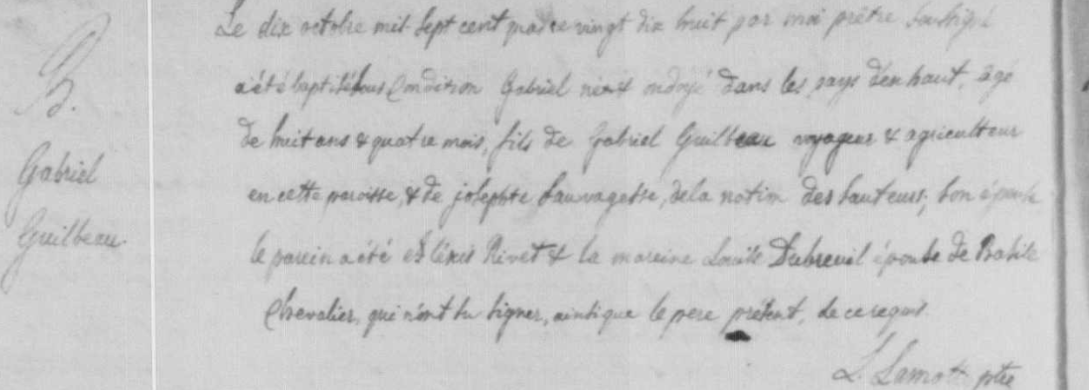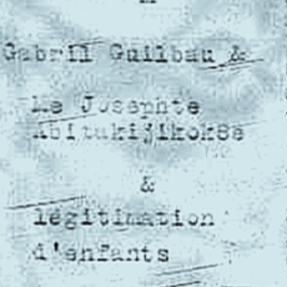The Abitakijikokwe Discovery
Uncovering an Ojibwe Ancestor in Quebec Parish Records
-

The Challenge
11798 baptismal record listing mother only as "Josephte Sauvagesse"
An Indigenous Woman Without a Name
The initial mystery began with a French-Canadian voyageur named Gabriel Guilbault whose first wife appeared in family trees only as "Sauvagesse" - a generic term meaning "Indigenous woman." No name, no identity, no story - just another woman lost to family memory through two centuries of distance from the original records.
Research obstacles quickly emerged. No civil registration existed for Indigenous marriages before the 1800s. Catholic records typically used only generic terms like "Sauvagesse" rather than recording Indigenous names. Multiple spelling variations of surnames (Guilbault/Guilbeau/Guilbeault) complicated searches across the Quebec-Ontario border region. The assumption seemed inevitable: like most Indigenous ancestors, she would remain forever nameless.
-

The Breakthrough
Marriage record from L'Annonciation, Oka, preserving the bride's Ojibwe name "Abitakijkok8e"
Multiple Discoveries Unlock the Mystery
October 10, 1798 revealed the first clue. Three children baptized together at St-Paul-de-Joliette identified their mother not just as "Sauvagesse," but specifically as "Sauteuse" - an Ojibwe/Saulteaux woman. This tribal identification was the key that unlocked everything.
The Marriage Record provided the breakthrough. On January 27, 1801, at L'Annonciation in Oka, the priest preserved her full Indigenous name: "Marie Josephte Abitakijkok8e." The suffix "-ikwe" confirmed this as an authentic Ojibwe name, meaning "woman" in the Ojibwe language.
Legal Continuity spanning centuries. An 1893 notarial document still identified her as "Marie Josette Sauvagesse de nation" - maintaining her Indigenous identity in legal records 80 years after her death.
-

The Result
L'Annonciation Church at Oka, site of the 1801 marriage preserving her Ojibwe name
From "Unknown Sauvagesse" to Documented Ojibwe Matriarch
"Marie Josephte Abitakijikokwe" emerged as one of the best-documented Indigenous women in Quebec parish records. Fifteen documents across five parishes preserved not just her existence, but her Ojibwe name, tribal affiliation, and Indigenous identity across nearly a century.
Six children documented between 1790-1806, with baptismal records explicitly identifying their mother as Ojibwe/Saulteaux - creating a clear genealogical trail for descendants seeking Indigenous heritage documentation.
Métis family formation clearly demonstrated through classic fur trade marriage patterns - relationship beginning "à la façon du pays" before Catholic ceremony, with Indigenous witnesses and godparents maintaining kinship networks.
Complete genealogical proof meeting the highest documentation standards, transforming an "unknown Indigenous woman" into the key to understanding an entire family's Métis heritage.
Read “Finding Marie Josephte: How One Ojibwe Woman Emerged from 200 Years of Silence”
Request "Five Signs of Indigenous Ancestry in Quebec Parish Records" to begin your own search.
Discover Your Family's Story
Every family has untold stories waiting to be uncovered. Let's reconstruct your ancestor's lived experience through rigorous archival research.
Contact us